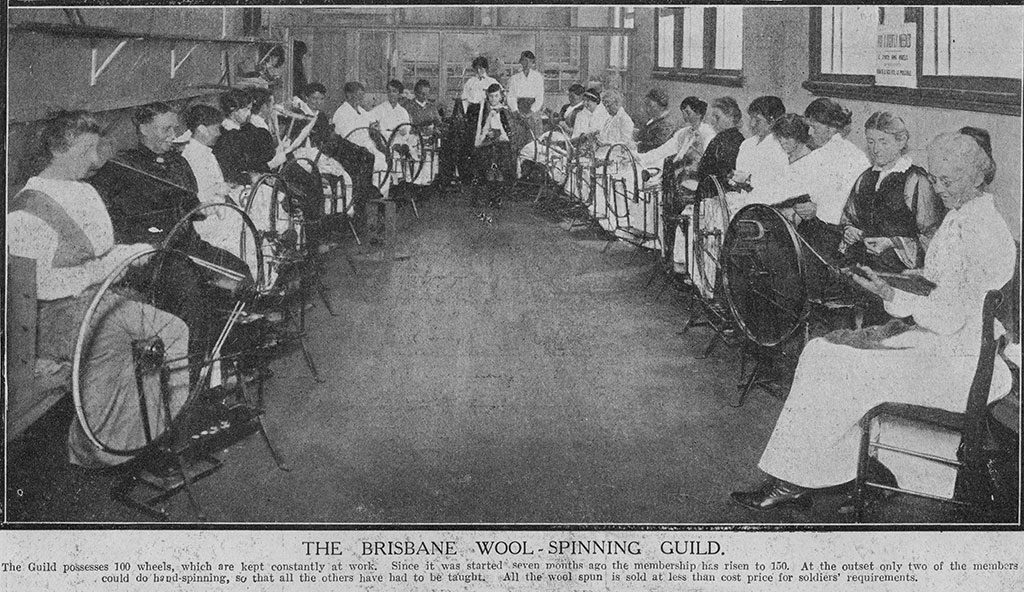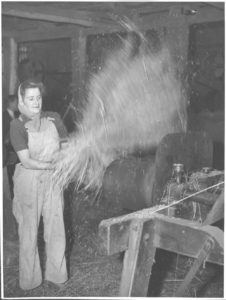Here are some links I’m collecting on Australian Textile history. It is far from exhaustive and much isn’t available as links online but lie inside our major libraries.
Samples of woven fabrics made in New South Wales were sent by Governor Hunter to Sir Joesph Banks and Lord Sydney in England in 1799. The weaver was Irish Convict Andrew Cunningham. He wove some bolts of fabric, the first of linen from flax he had grown from wild seed and another from locally produced wool.
This reference is to fabric woven on a loom. However for up to 80,000 years before 1799, the Aboriginal peoples of Australia created twined and coiled utilitarian objects and possum fur cloaks.
Colonial weaving
1879 Evening News Sydney. A reference to a jacquard cloth woven by Mr John Vicars woollen factory.
Aboriginal weaving
Hunter Region Possum fur cloak – collected by US exploration expedition in 1839. Currently in the Smithsonian National Museum of Natural History, USA. No doubt discussions are ensuing to return it to the Hunter! Article.
Interesting historical

Industry
Flax production in Victoria – 1940 WW2 In the early 20th century Australia produced 2000 – 20000 acres of flax for linen production. In World War 2, Britain lost its traditional suppliers of flax from Europe and gave Australia a quota to fulfil towards the war effort. The flax was used for coats and parachute harnesses, ropes, tarpaulins and glider covers. Virtually all of the flax grown at this time went towards the needs of war. Drouin Flax Mill in Victoria was farmed with the help of the Land Army. More information. Also see about the growth of flax production in war and prospects for the industry after WW2. This article writes about some of the agricultural issues with growing flax in Australia.

Sydney Morning Herald – 18 May 1964 – Textiles Industry survey (pages 13-18). Amazing stories about our textile skills and clothing and textiles being the 2nd largest industry in Australia behind the automotive one! In just 50 years things can change dramatically.
Australian Textile Innovation Chapter 5- D. S Taylor. Australian Academy of Technological Sciences and Engineering. A good round up of textile history from 1788 – 1988.
The Australian Wool Network was established in 1994 and looks to generating some real positive initiatives from wool growers to garments and consumers. For example, MerinoSnug.
Weaving Schools
Sturt Contemporary Craft and Design school – a short history. History of the weaving school.
Australian Tapestry Workshop – Full working Tapestry workshop and short courses in Tapestry.
Kay Faulkner’s Weaving School – General and specialist weaving short courses and extended tuition by Master weaver Kay Faulkner. Kay is also the weaver of the High Court of Australia’s robes.
Weavers
This section is a bit difficult to write. Firstly many weavers aren’t on the internet and their work and lives are found in journals and books. There are many that I haven’t yet included and as I’m now getting older I realise that we move along in our craft in many different ways and there are always new weavers ‘discovering’ handweaving and shaping it to their time.
Mary and Larry Beeston – The Hunter Tapestry – for the Great Hall, Newcastle University, 1988.
Fay Skyring and Di Lansdown – Upholstory for Australian Parliament House.
Kay Faulkner – Weaver
Valerie Kirk – bio
Elizabeth Nagel – Weaver at Sturt for 50 years. An image.
Ericka Semler – a post about her work.
Diana Wood Conroy – Tapestry Artist
India Flint – Textile artist working extensively with natural dyes from Australian bush and consequently to all other natural environments. She has developed a dye and print method on fabric and also weaves!
An overview of some Australian weavers
In the course of my studio teaching I have met many people with relatives that wove all of their lives. Some come from families littered with weavers. It is difficult to do all of these lives justice on this page and give them the recognition they deserve but I am building up some information on the range of weavers in Australia.
Major projects
Tapestry South Australian Parliament
Tapestry – Australian Great Hall – Government House, Canberra
Publications
History of the The Australian Forum for the Textile Arts TAFTA magazine.
Development of Australian studio tapestry from 1975 to 2005

Leave a Reply